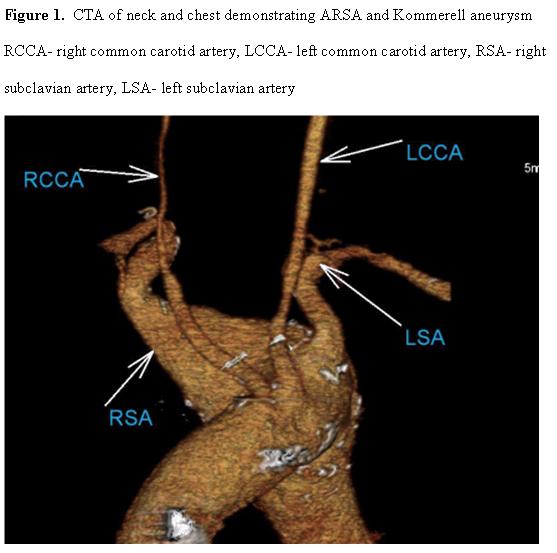 |
|
|
Back to Annual Meeting Posters Hybrid Endovascular Treatment of an Aberrant Right Subclavian Artery with Kommerell Diverticulum: Case presentation and Review of the Literature Kathleen M. Lamb, MD1, Neil Moudgill, MD2, Anu K. Whisenhunt, DO1, Thea Price, MD1, Michael Ayad, MD1, Dawn Salvatore, MD1, Babak Abai, MD1, Paul DiMuzio, MD1. 1Thomas Jefferson University Hospital, Philadelphia, PA, USA, 2University of South Flordia, Tampa, FL, USA.
OBJECTIVES: Aberrant right subclavian artery (ARSA) is a rare anatomical finding resulting from abnormal embryologic development of the dorsal aorta and subsequently the right subclavian artery. Frequently, an aortic out pouching, or Kommerell diverticulum (KD) is present at the ARSA aortic origin. Patients may present with “dysphagia lusoria” if the ARSA and KD compresses the esophagus posteriorly. Given the historically high rate of rupture, early repair is indicated. Since the first repair (1971), treatment involved a thoracotomy with aneurysm exclusion. Presently, successful exclusion can be accomplished with thoracic endovascular stent grafting combined with carotid-subclavian bypass to maintain flow to the upper extremities. We present a successful repair of a symptomatic (dysphagia, weight loss) ARSA with KD using this hybrid open-endovascular approach. Back to Annual Meeting Posters
|
||||||||
© 2025 Society for Clinical Vascular Surgery . All Rights Reserved. Privacy Policy.

